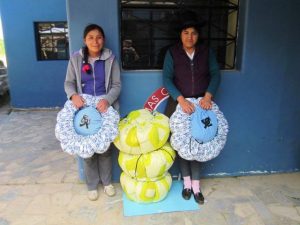Heat Retention Cooking
What would you do if the utility grid went down? How would you cook the food that might be spoiling in your freezer? What if you’re out camping and the propane bottle is almost empty?
Cooking food by regular means, whether on an open fire or any other heat source – is inefficient: under usual circumstances, up to 90% of all heat in cooking is lost to the air. Open flames also produce heat and smoke.
There are many circumstances when heat retention may be used effectively to save fuel and continue cooking. For example, a 2014 article in Low-Tech Magazine asks “Why do we insulate our houses and not our cooking pots?”.
Heat retention cooking is a traditional technique for fuel saving. Food (soups, stews, or any food to be simmered) is put in a cooking pot (with a well-fitting lid), heated to boiling over a conventional flame, and then placed in an insulated box, basket, or bag. The insulating material may be traditional materials such as straw or cotton, or a styrene-filled durable fabric. The heat retention container could even be an insulated camping cooler lined with towels (see Frugal Green Girl’s Youtube video)
Heat retention has been used for thousands of years in situations ranging from camas pit-cooking, Hawaiian luau, and pachamanca in Peru. In the early 20th century, home economics texts advocated “fireless cooking”. It’s sometimes described as haybox cooking.
Advantages of heat retention cooking are numerous:
- No additional fuel is required
- Free once you have the basic equipment
- Food does not burn
- Uses 1/4 less liquid
- Doesn’t emit smoke and improves air quality
Environmental advantages are worth noting
- Puts forests under less stress
- Kitchens stay cooler
- Insulating materials can be made from recycled styrofoam in the form of styrene pellets, or from foam chips.
Heat retention cooking demonstrates the basic laws of thermodynamics. “Cooking for Engineers” explains the physics of heat transfer: “If food is uniformly the same temperature as its surroundings, no heat transfer will occur (although chemical reactions will still be occurring, so ‘cooking’ may still be happening)
The main issue with heat-retention cooking is to heat food to boiling, and then keep it at a food-safe temperature. Two important points: choose the right pot and the right food product, and follow Food Safe principles at all times. BC Food Safety courses are available online through Open Learning, and health jurisdictions across Canada also have food safety guidelines.
Point #1 – A stainless steel stock pot with snug fitting lids and small handles on each side is recommended. It should be filled quite full with the food product you are cooking. The pot should fit tightly into the insulating materials and have a lid or means to continue to retain heat.
Point #2 – An easy to use digital food thermometer is essential for foods teachers, home economics teachers, worrywarts, and anyone who has ever had food poisoning. The “danger zone” for food products is between 4 degrees Celsius (40 degrees Fahrenheit) and 60 degrees Celsius ( 140 degrees Fahrenheit). Remember this phrase: “2-4-60” – food should not be left for over two hours between 4 and 60 degrees C.”
My experiences with heat retention cooking began in 2016 when I went to Yurac Yacu, Huaraz, Peru. Diana Morris, co-owner of The Lazy Dog Inn, first proposed the idea, based on her store-bought heat retention cooker or bolsa magico [magic bag]. Yurac Yacu is a high-altitude farming community about an hour away from Huaraz. The women of Yurac Yacu have a knitting cooperative and started a restaurant for visitors, part of an education complex with a preschool and computer room. Fuel can be scarce in the area; stoves emit smoke and create health issues. We had grant money from the Canadian Home Economics Foundation and Sombrilla International Development Society. Two young women from the community, Carmen and Herlinda, spent a few days with me making bolsas. We did not have complete instructions, only Diana’s sample bag. Supplies such as 100% cotton, draw strings and foam-chips were readily available in Huaraz. We experimented, and figured out how to do it by trial and error.
Since 2016 the magic bags project at Yurac Yacu has lagged a bit, but it hasn’t gone away. Heat retention cooking could become more important in cases of power and utility outages or where fuel collection is an issue.
The heat retention bag I made for practice at home still gets occasional use when I have to transport hot food for an hour or so, and I don’t want it to go through the food safety danger zone. Or, when I have to go out for an hour or two and a stew is cooking in the oven, I use the magic bolsa so the oven is not left on unattended.
The bolsas we made are bulky but they were so much fun to make. Small insulated camping coolers as demonstrated by Frugal Green Girl are practical. But, there’s much less joy in them.
I have a self-made pattern and some confusing instructions if anyone would like to make one. Just leave a note or contact [email protected]
All photos contributed. Thanks to Diana Morris, and Carmen and Herlinda.





